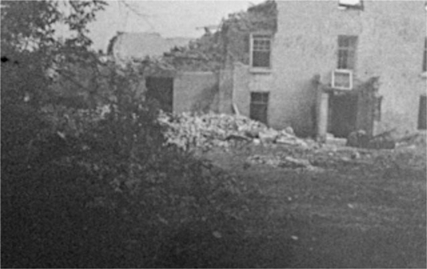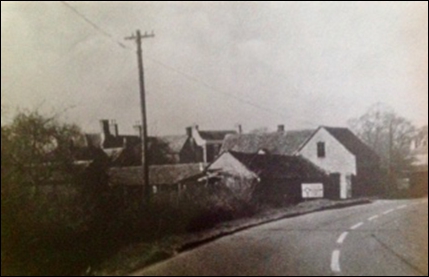

People settling in Eastington after 1970 may be unaware that Swallowcroft was built on the grounds of what was once quite a grand residence.
This was Alkerton House and it faced across the lane towards Alkerton Farm.
It was originally built at some point in the latter part of the 18th century, although its origins may have been further back in time, as parts of the house apparently incorporated stonework that survived from an even earlier building.
Before its demolition in 1970, there were also traces of what was thought to be a moat that once surrounded the earlier house – it’s possible that these were remnants of the ‘manor house of Alkerton’, recorded as far back as the 14th century. Alkerton House, in its final guise, was described as being built of brick faced in stucco, with wall pilasters and a central pediment.
Surprisingly little of its early history seems to have been recorded, although Slater's 1859 Directory of Stroud District recorded that a Mrs Sarah Smyth was living there at the time. The directory also noted the presence of the Keys family in the village – various family members traded, farmed and came to own local properties. In that year, for example, Alfred Keys was listed as a baker, flour dealer and shopkeeper, and Charles Keys as a shopkeeper.
In 1909, an Alfred Keys was living in Alkerton Farm and was recorded as a farmer and cider maker. He also owned various cottages and houses around the village. Quite possibly, some of these were tied workers cottages housing his farm labourers. It’s also likely that at least some of the cider produced was provided to the workforce. The Keys family subsequently moved out of Alkerton Farm and across the road to Alkerton House. The house’s final occupant was a later Alfred Keys, author of the sole book on Eastington’s history (first published in 1953 and republished in 1964).
Alfred lived in the house until its demolition in 1970, when the site was cleared in readiness for the construction of Swallowcroft. By this time, by all accounts, it was in a fairly sorry state – the upkeep of such a large, underused house must have been far too much to carry on with, so the bulldozers moved in and within barely more than a week or two, it was gone. Mr Keys had a small bungalow built roughly within the footprint of the house, where he then lived for some years.
The rise and fall of Alkerton House
There was a second major building that survived for a few years longer. This was a substantial stone-
In later years, this must have served as a garage as it contained a hoard of old abandoned cart and car parts, wheels, and even several spare unused ornamental chimneys for the main house. These now grace a cottage in Shipton Oliffe in the hills above Cheltenham.
For a few years, the coach house stood abandoned as the surrounding orchard was grubbed up and Swallowcroft went up around it. It was rumoured to have been sold – dismantled and moved elsewhere. Older residents will also remember another feature that once stood in the grounds – the famous whale bone arch, made from the jaw bones of a whale that met its end on the banks of the Severn during the 19th century.
This also disappeared, only to come to light many years later in Whitminster. It’s now stored in Eastington waiting for the day that it can re-
Like its predecessor, Mr Keys bungalow was eventually demolished and new houses built on the plot. The large stone cider mill that formerly stood in its front garden as a reminder of the family’s former cider making prowess disappeared, presumably sold off and moved elsewhere. Today, there is nothing left that gives a clue to this grand house that once dominated the centre of the village.


Alkerton House, 1960s – looking a bit shabby

Looking towards the Co-
Steve Mills
Published in ECN 156 April/May 2016)
Alkerton House
